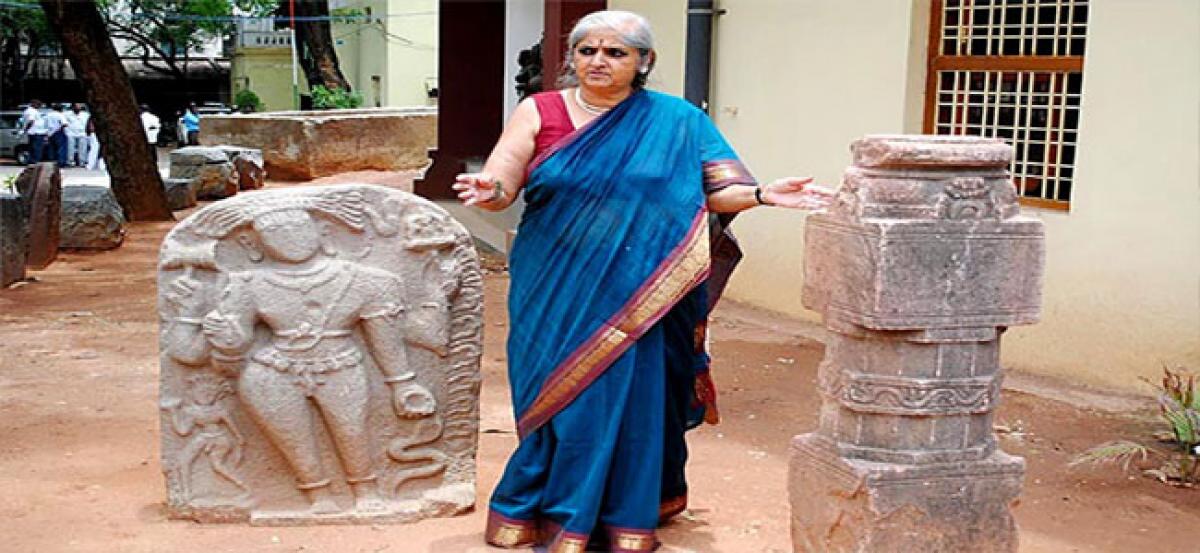Live
- Around 200 Schools in Karnataka Participated in School Cinema International Film Festival
- Karnataka BJP MLA Faces Rape Charges Amid Multiple Legal Troubles
- Gruesome Discovery In Chennai: Dismembered Body Found In Suitcase
- Bollywood Divas Shine at London Fashion Week 2024
- IND vs BAN 1st Test: Jadeja and Ashwin Rescue India with Unbeaten Partnership on Day 1
- Coco Gauff and coach Brad Gilbert end partnership
- People will give certificate to BJP govt: Majhi
- Laos works to boost job employment in rural areas
- How Much Hair Colour is Too Much? Signs You May Be Overdoing It
- IND vs BAN: Ravichandran Ashwin, Ravindra Jadeja save India the blushes on day one
Just In

Those were the days when there used to be open Willy’s jeeps, petrol in jerry cans. Cinema theatres had ladies section with purdah in some theatres. James Street (now MG Road) was the most sought-after area for shopping. We used to enjoy living with different communities, learn different languages and know about the culture of each other,” she recalls.
One of the oldest residents of Secunderabad, INTACH co-convenor Anuradha Reddy recalls the huge transformation that Secunderabad has gone through over the years
Secunderabad is not the same for its locals who have been living there for several decades. Due to the huge metamorphosis of the colonial conurbation, they were mute spectators of the city losing its old-world charm. Those who were born and brought up in the twin town of Hyderabad feel nostalgic about the changes that made Secunderabad a hub of activities of all undesired sorts.
“I am proud to be a Mulki and a Secunderabadi. Those were the days when there used to be a great connect among people. Unlike these days, there used to be lot of safety for everyone including women.
Eve-teasing and other kinds of harassment were unknown. Girls like me could go to school on a bicycle without any fear and there was nothing like pollution or traffic hazards. But now Secunderabad has changed completely. It is now a concrete jungle with wild beasts who have no discipline,” says Anuradha Reddy, co-convenor, the Indian National Trust for Art and Cultural Heritage (INTACH).
Recalling the good old days, Anuradha Reddy says in those days kewda flowers were grown in Bholakpur and that area was known as Kewdabun. IAS officers had no AC cars, no 5-star accommodation, no mobiles and food was cooked on roadsides with coal or wood and the wonderful forests were for wild animals, not for the animals of today from concrete jungles.
Those were the days when there used to be open Willy’s jeeps, petrol in jerry cans. Cinema theatres had ladies section with purdah in some theatres. James Street (now MG Road) was the most sought-after area for shopping. We used to enjoy living with different communities, learn different languages and know about the culture of each other,” she recalls.
Padmarao Nagar had a distinct influence of Tamil culture. This area was developed by Mudaliars. St. Ann’s School of which Anuradha Reddy is an alma mater used to have Anglo Indian teachers and for a girl who had come from a traditional Hindu background, the convent education had opened a new world and culture.
Turning a bit nostalgic, she says it had given her an opportunity to become friends with people from less advantaged sections. As she grew up and started going to college, it provided a whole new experience. The Nizam State Road Transport Department used to operate double decker buses (Route No 7&8). “It was by choice that I used to commute to college and back home by these buses,” she reminisces.
But now, things are entirely different. Secunderabad has lost all its charm of those good old days. The solution to the growing problems of modernisation which the rulers wanted to provide has created even bigger problems. “We now have an unfriendly atmosphere, the flyovers do not serve any purpose, trees have been cut and what Metro has done is horrifying,” she rues.
Referring to the proposal of taking over of Bison Polo Ground by the State government to construct Secretariat and Assembly complex, she said, “I don’t want to see agitations in front of my house,” she remarks. Despite being one of the oldest Secunderabadis, she says she feels wistful while driving past the iconic Clock Tower. “As I drive past that area, I sing the ghazal, “Idhar Jaun, Udhar Jaun, Mushkil Mein Hun Kidhar Jaun.”
By V Ramu Sarma

© 2024 Hyderabad Media House Limited/The Hans India. All rights reserved. Powered by hocalwire.com







